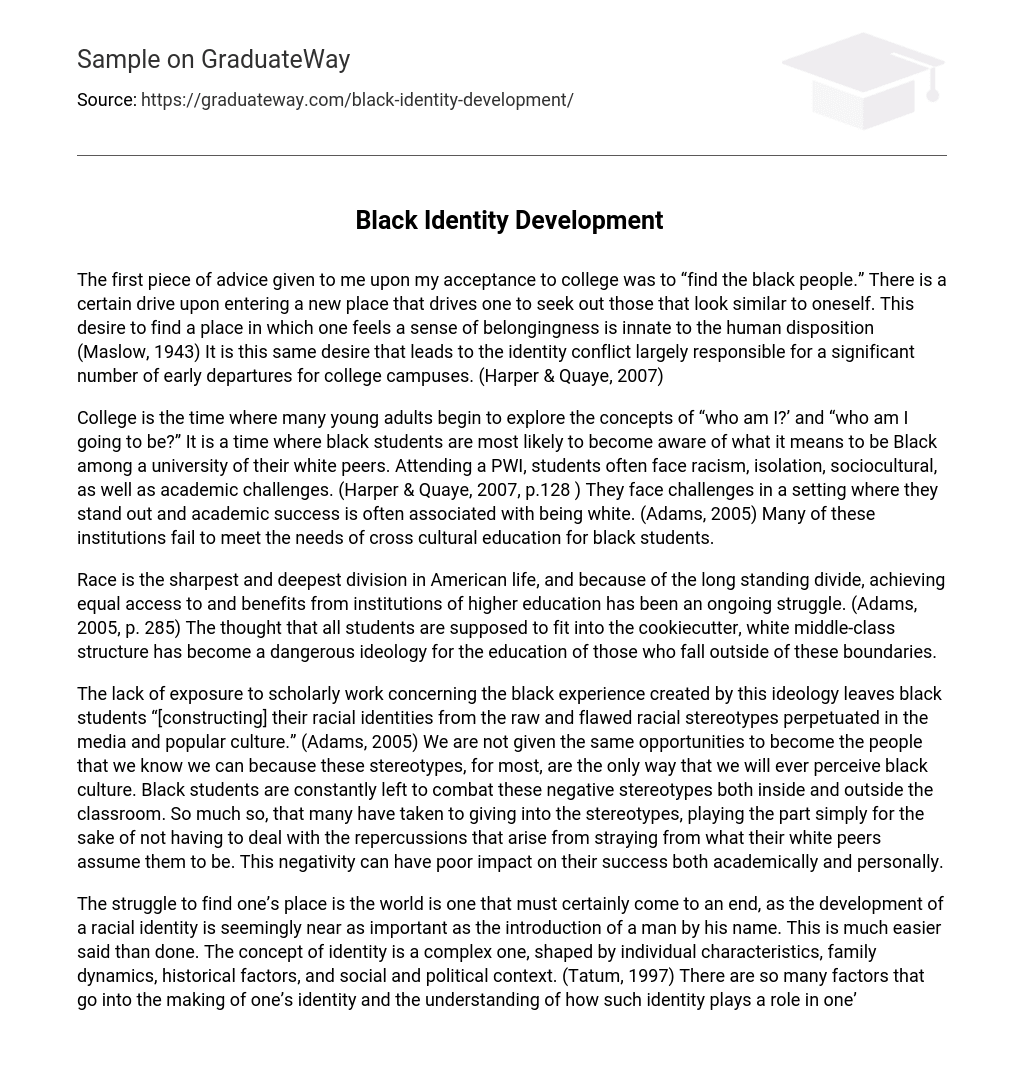The first piece of advice given to me upon my acceptance to college was to “find the black people.” There is a certain drive upon entering a new place that drives one to seek out those that look similar to oneself. This desire to find a place in which one feels a sense of belongingness is innate to the human disposition (Maslow, 1943) It is this same desire that leads to the identity conflict largely responsible for a significant number of early departures for college campuses. (Harper & Quaye, 2007)
College is the time where many young adults begin to explore the concepts of “who am I?’ and “who am I going to be?” It is a time where black students are most likely to become aware of what it means to be Black among a university of their white peers. Attending a PWI, students often face racism, isolation, sociocultural, as well as academic challenges. (Harper & Quaye, 2007, p.128 ) They face challenges in a setting where they stand out and academic success is often associated with being white. (Adams, 2005) Many of these institutions fail to meet the needs of cross cultural education for black students.
Race is the sharpest and deepest division in American life, and because of the long standing divide, achieving equal access to and benefits from institutions of higher education has been an ongoing struggle. (Adams, 2005, p. 285) The thought that all students are supposed to fit into the cookiecutter, white middle-class structure has become a dangerous ideology for the education of those who fall outside of these boundaries.
The lack of exposure to scholarly work concerning the black experience created by this ideology leaves black students “[constructing] their racial identities from the raw and flawed racial stereotypes perpetuated in the media and popular culture.” (Adams, 2005) We are not given the same opportunities to become the people that we know we can because these stereotypes, for most, are the only way that we will ever perceive black culture. Black students are constantly left to combat these negative stereotypes both inside and outside the classroom. So much so, that many have taken to giving into the stereotypes, playing the part simply for the sake of not having to deal with the repercussions that arise from straying from what their white peers assume them to be. This negativity can have poor impact on their success both academically and personally.
The struggle to find one’s place is the world is one that must certainly come to an end, as the development of a racial identity is seemingly near as important as the introduction of a man by his name. This is much easier said than done. The concept of identity is a complex one, shaped by individual characteristics, family dynamics, historical factors, and social and political context. (Tatum, 1997) There are so many factors that go into the making of one’s identity and the understanding of how such identity plays a role in one’s life brings another set of complications. However, upon the discussion of the Nigrescence model, it is easier to conceptualize how important it is to have some sense of racial identity and how such can create valuable relationships between those with similar beliefs. When I first arrived at my PWI, I was highly unprepared for the
In 1971, when Cross wrote about the Nigrescence model, he referred to it as an “identity change process as a Negro-to-Black experience, the kind of process that could be seen in black behavior during the Harlem Renaissance.” He later reconsidered the theory as a resocializing experience that transforms a pre-existing identity to one that is Afrocentric. (Cross, 1991) The The struggle to find one’s place is the world is one that must eventually come to an end, as the development of a racial identity is seemingly near as important as the introduction of a man by his name. The Nigrescence model is comprised of five stages of racial identity, each of which consisting of its own characteristics.





